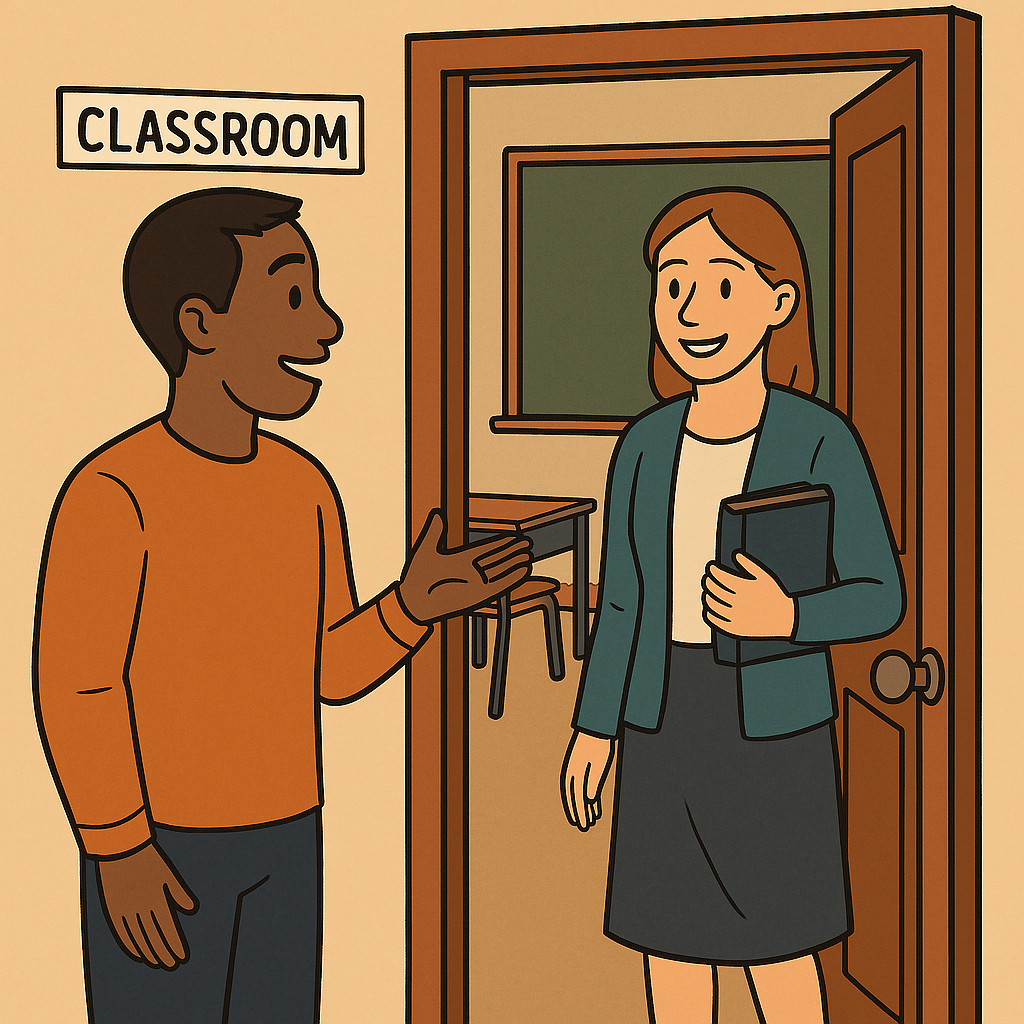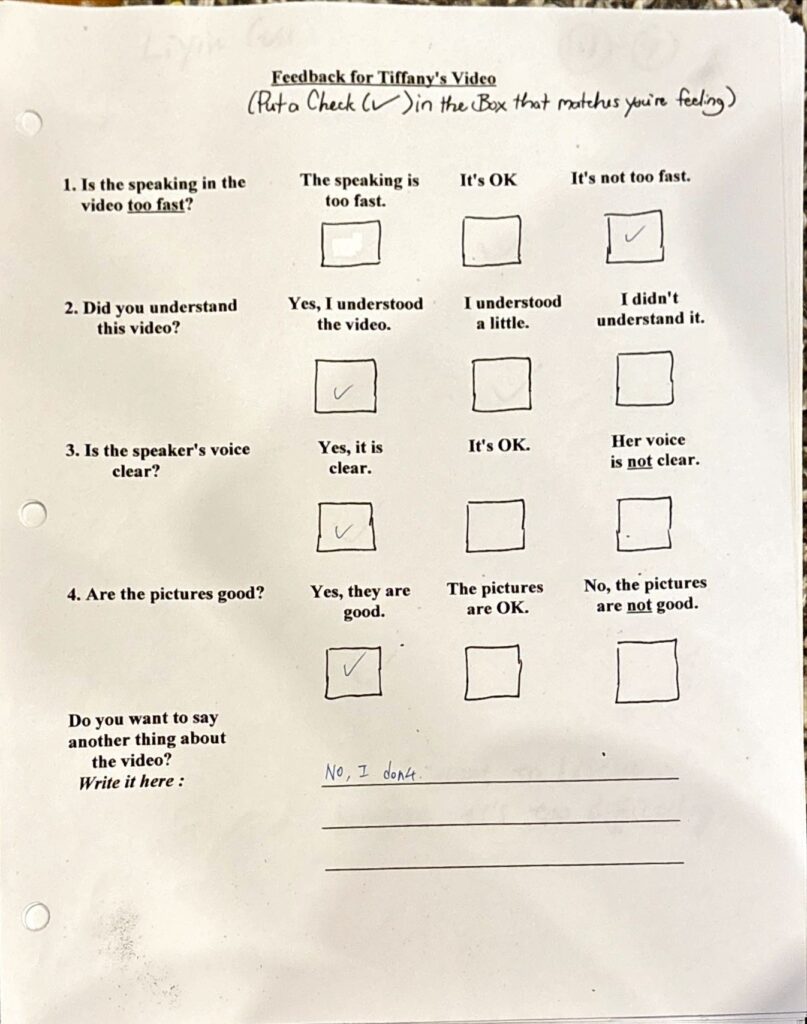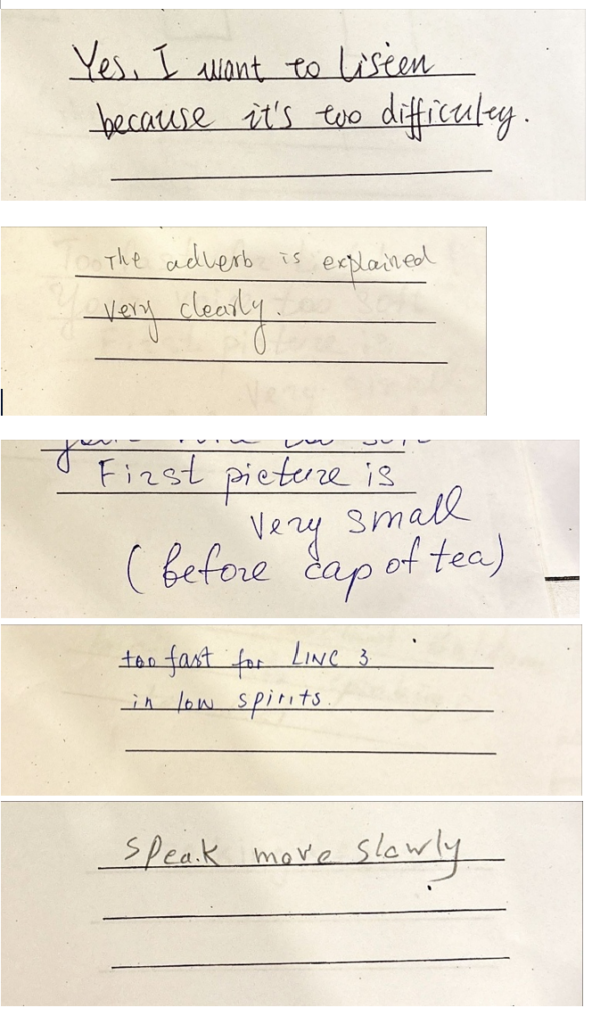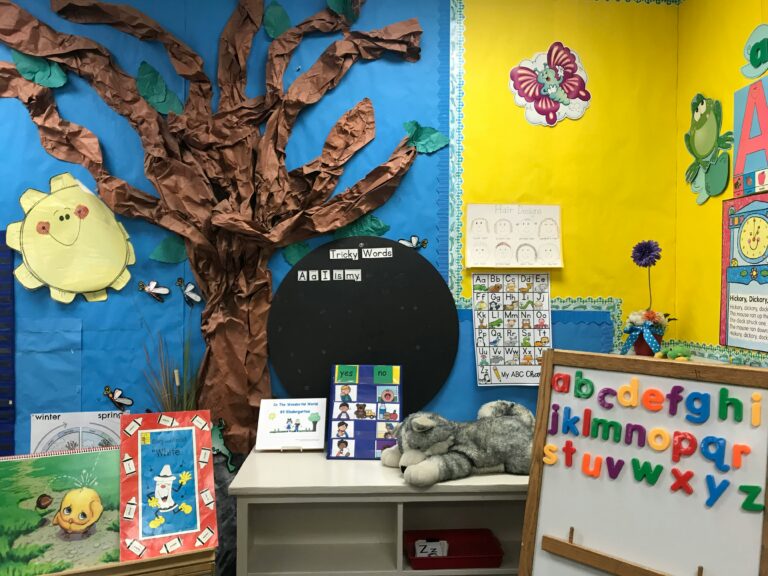“Everything is good!”

Featured Image by ChatGPT
Tiffany’s Reflection on Student Feedback
My first video attempt in power point was an adventure for sure. After writing the script for Simple Present Tense, and listening to Kati’s co-designer student feedback, I realized that it was going to be too long. So, I shortened it to include only common daily routines and present tense formation with frequency adverbs – putting question formation and spelling aside for another video. By the end I was proud that I had learned some really cool transition tricks, and I was looking forward to getting some feedback from my adult EAL students…..but there was just one problem – there was no way that my class, who have been with me for most of the year, would give me the truth.
Adult newcomer EAL students are generally very polite and respectful – many cultures will not contradict the teacher even when the mistake is obvious. I have had students endure a mistake I made, only to come quietly after class and whisper that I spelled something incorrectly. Other cultures, especially when they are new to Canada, will stand when I enter the room and will not enter the room before me if we are both outside. Even when I tell them that they don’t need to do that here in Canada I am met with:
“No, no, teacher, this is my way!”
Me: “You can call me Tiffany.”
“Ok teacher!”
They also sugarcoat feedback – “Everything is good, I just need to review more, I’m not a good student.”

So, I knew my class wouldn’t necessarily give me the nitty gritty co-designer tips I was hoping for. I asked two of the teachers at my location if I could show the video to their classes instead – hoping that if they were not that attached to me, they might be more honest. It was actually a better fit because these two class levels – LINC 1-2 and LINC 3 learn and practice the simple present everyday. My LINC 5 class is at a higher level and they already know the simple present well. One of my co-workers suggested that she show the video instead of me in hopes of the students not just saying, “Everything is good!” She even made a sheet for them with some questions as a guide.

With a few key CTML principles in mind the sheet included questions to investigate the:
- Temporal Contiguity Principle – visuals and audio information simultaneously
- Multimedia Principle – words and pictures together
- Redundancy Principle – narration in balance with text
- Voice Principle – narration spoken in a human voice
- Signaling Principle – printed text near corresponding graphic
This is a good example of what most of the forms I got back looked like. Overall, the co-designers said that the speaking was too fast, they wanted to listen again. Only a few had other comments:

The good news is that the grammar was clear, but many commented on the speed. I went back and re-recorded a little more slowly. But in order for inclusive design to work its best, it can’t be too slow otherwise a learner for who the speed is perfectly fine, may become disinterested. This is where hosting the videos on YouTube is very useful as learners can increase or decrease the speed as well as add captions in multiple languages if they need. H5P unfortunately doesn’t have such a feature.
Only one student commented on the pictures being too small. I think they were talking about this screen:

I decided to divide it into two slides to allow for the enlargement of the pictures.


Overall, it was a good experience eliciting feedback. I think I got some good co-designer tips that I can throw into the virtuous tornado and see what other improvements come out.

“Everything is good!” © 2025 by Tiffany Kearns is licensed under CC BY-NC-ND 4.0





